The Government’s policy for a leading ocean economy
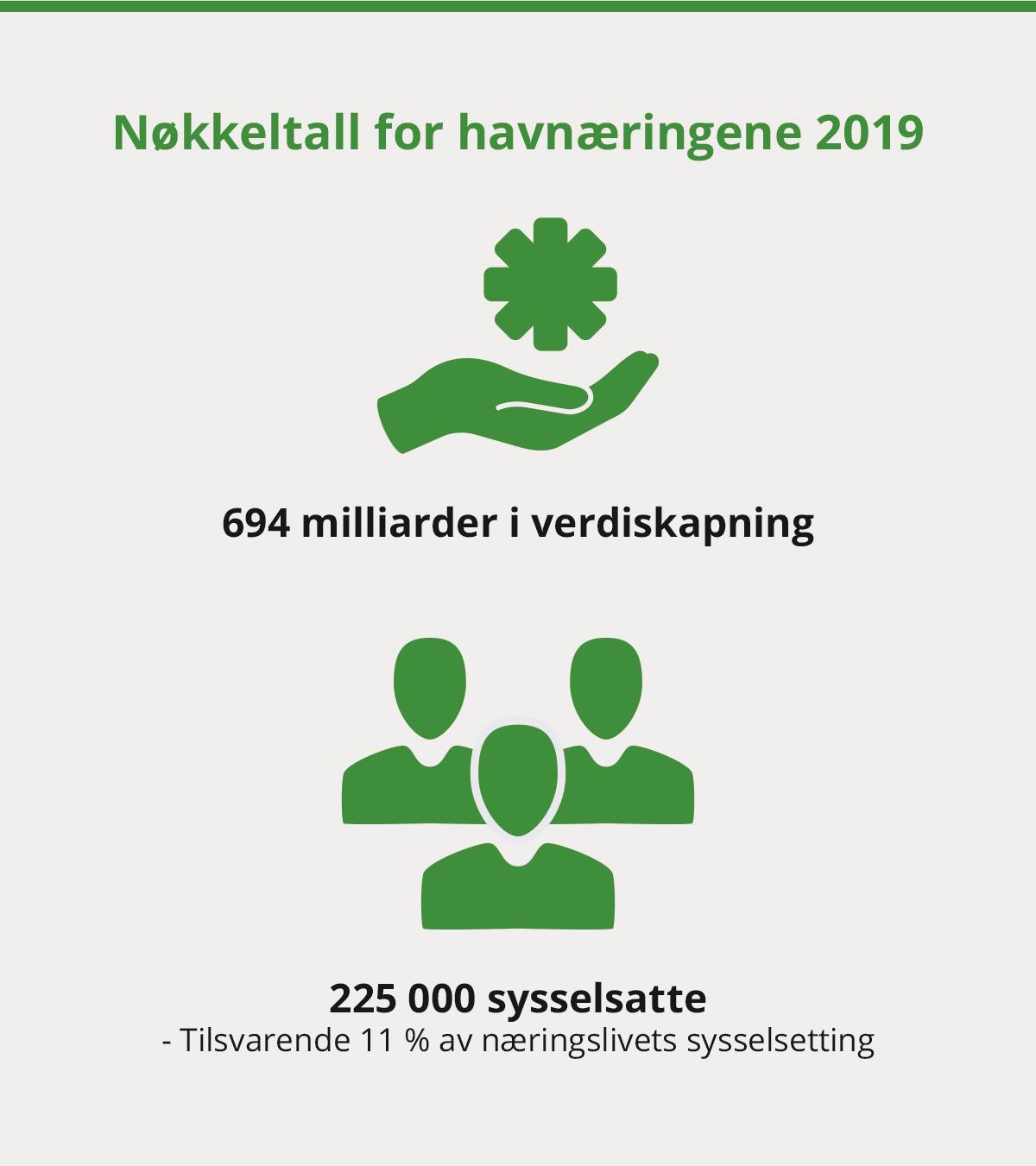
Employment and value creation in the ocean industries. Source: Menon Economics, 2019.
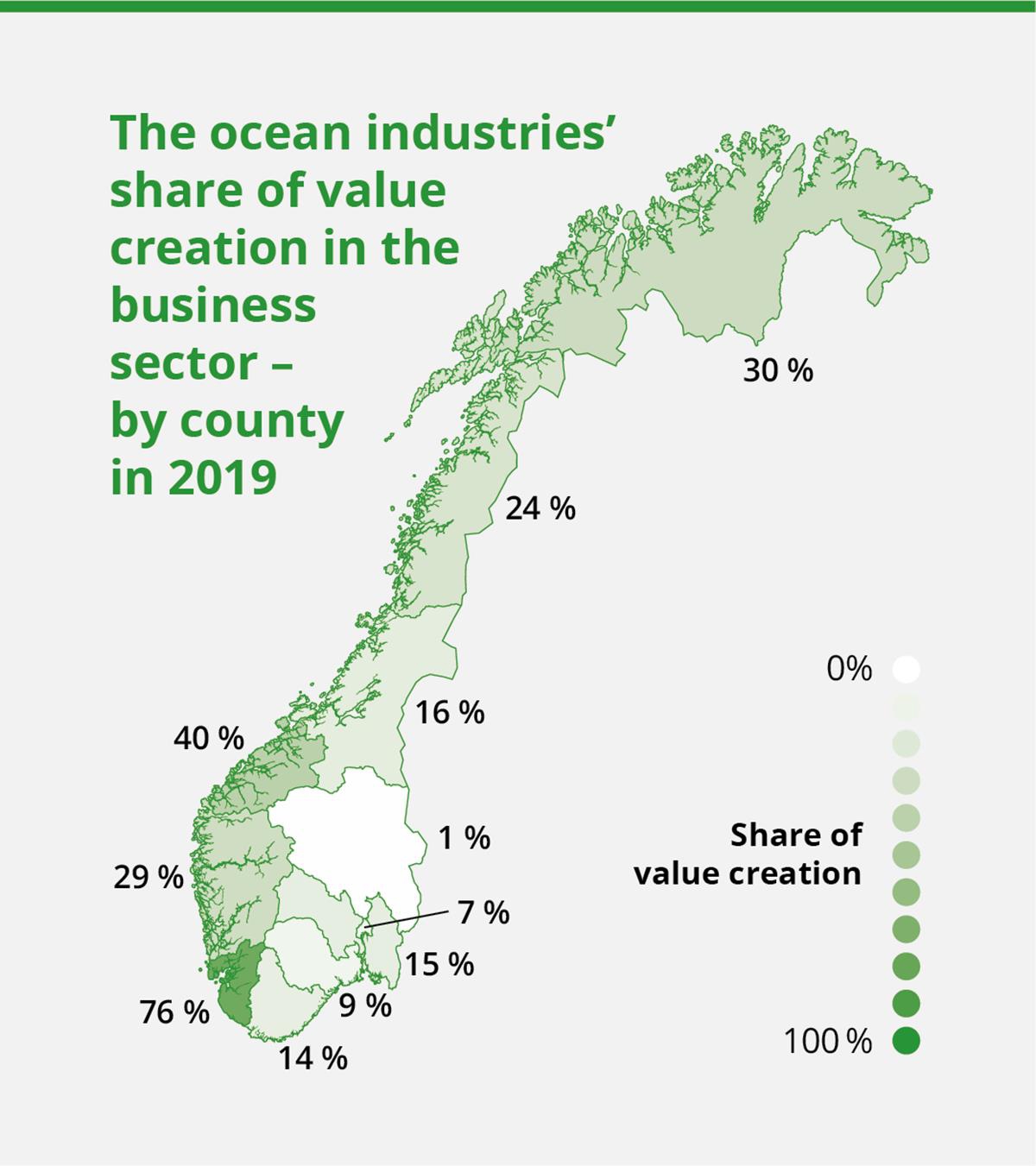
Value creation in the ocean industries. Source: Menon Economics, 2021.
The Government’s goal is for Norway to continue to be a leading ocean economy and to achieve the greatest possible value creation and employment from the oceans within sustainable limits.
The ocean policy laid out in the Government’s updated ocean strategy “Blue Opportunities” focuses on six areas that are mutually connected and support each other:
- Future-oriented ocean industries
- Education, skills and the labour market
- Research, technology and innovation
- Sound management and a predictable framework
- Clean and healthy oceans
- International cooperation and ocean diplomacy
In the updated ocean strategy, skills and digitalisation, regional and local value creation, climate change and green shipping were identified as the most important focus areas for ocean policy into the future.
Value creation and profitable jobs
In 2016, the Organisation for Economic Co-operation and Development (OECD) estimated that the global ocean economy will double by 2030 from the 2010 level, while providing a total of 40 million jobs. This could present major opportunities for further blue growth in industries where Norway has particular advantages and several world-leading players.
According to calculations by Menon Economics, 225,000 people in Norway work in the three major ocean industries of oil and gas, maritime and seafood.2 These industries are productive and their total value creation was NOK 694 billion in 2019. This means that almost 30 per cent of value creation in the Norwegian business sector is created by the ocean industries. New and emerging ocean industries come on top of this.
The oil and gas industry, including large parts of the specialised section of the supply industry, is Norway’s largest ocean industry with value creation of NOK 543 billion in 2019. According to Menon Economics, the industry employed just over 146,000 people nationwide in 2019.3 The maritime industry is the second largest with value creation of almost NOK 156 billion and 88,000 people employed in that same year, while the seafood industry had value creation of NOK 85 billion and employed almost 51,000 people. The figure above also demonstrates that there is an overlap between the ocean industries and that players in the supply industry in particular may belong to multiple ocean industries. The ocean economy can also include other businesses such as parts of the tourism industry that are focused on experienced-based activities linked to the ocean. There are also new and emerging ocean industries, such as offshore wind, carbon capture and storage (CCS) and sustainable mineral activities on the seabed.
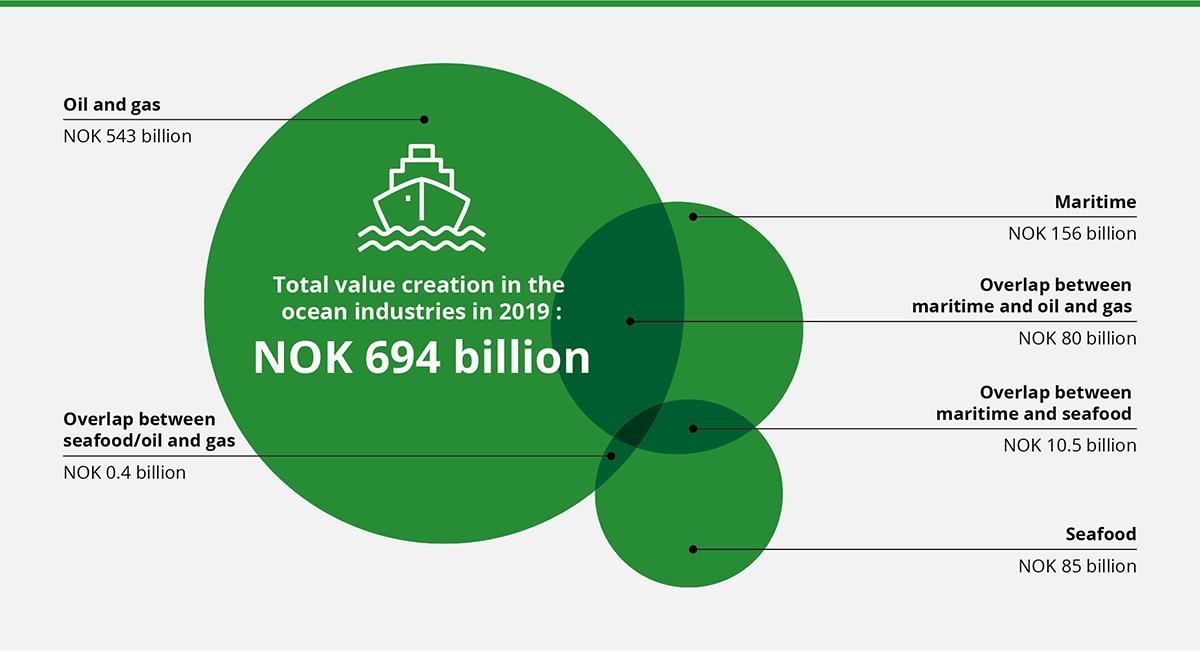
Value creation in the ocean industries of oil and gas, maritime and seafood in 2019. Source: Menon Economics.
Ensuring adequate and relevant skills
Increasingly more advanced technology in the established ocean industries and the emergence of new ocean industries will require further development of education and skills. Digitalisation and automation require a workforce with skills and knowledge that can further the competitiveness of the Norwegian ocean industries. Knowledge and experience-based skills in the Norwegian ocean industries are being maintained and further developed throughout the entire country. The petroleum industry in particular has generated substantial revenues for the Norwegian State and created positive ripple effects for the rest of the economy through knowledge, technology and demand for goods and services.
The close cooperation between companies, knowledge institutions, workers and government authorities has played an important role in the historical development of Norway as an ocean economy. The Government’s goal is for Norway to have a labour market in which employees enjoy security and flexibility, responsible employment practices, and a well-functioning and effective tripartite cooperation. If Norway is to be a leading ocean economy, the safety and welfare of workers must have priority.
The white paper on labour market relevance4 is part of the Government’s long-term commitment to interaction between the labour market and business sector and higher education, including greater emphasis on innovation and entrepreneurship in higher education. The Government has also initiated several measures to close the gap between the skills required by the labour market and the skills employees actually have. This is addressed in both the white paper on skills reform5 and white paper on the completion reform.6
The ocean industries have a low proportion of female employees compared to other sectors of the Norwegian economy. Girls and Technology is a nationwide scheme aimed at increasing the proportion of girls in technology subjects at all levels of the education system. Increased female entrepreneurship is important for achieving greater gender equality in the business sector. In 2019, the Government presented an action plan for female entrepreneurs, with various measures to provide a good framework adapted to their needs.
In connection with the Storting’s consideration of the white paper on a forward-looking fisheries industry,7 the Storting asked the Government to develop a strategy for better gender equality in the fisheries industry. The Ministry of Trade, Industry and Fisheries has asked the Norwegian Institute of Food, Fisheries and Aquaculture Research (Nofima) to prepare a report describing the status of gender equality in the fisheries industry and that puts forward proposals for possible policy instruments and initiatives for promoting greater gender equality. The report will contribute to the Ministry’s preparation of a strategy for improving gender equality in the fisheries industry.
While considering the White Paper on maritime industry in the spring of 2021, the Storting asked the Government to develop a strategy for gender equality in the maritime industry. The Ministry of Trade, Industry and Fisheries will coordinate the work on the strategy.
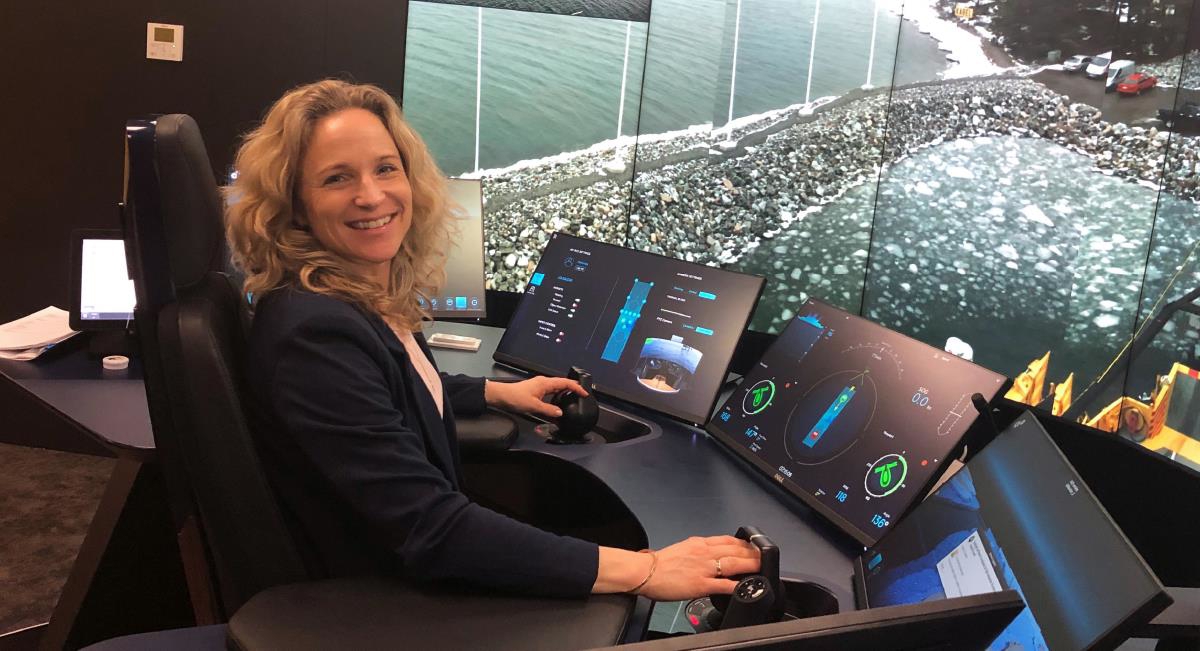
The Government wishes to contribute to gender equality in the ocean industries. Photo: Massterly.
A world leader in ocean management
The oceans are largely what provide the basis for the Norwegian welfare society, and it is essential that they are managed in a sustainable manner. Norway has a long tradition of knowledge-based ocean management. Good research-based management of ecosystems, ocean resources and the ocean industries ensures future economic activity and value creation.
Norway’s integrated ocean management plans are a tool both for ensuring value creation and food security and for maintaining the environmental value of Norway’s sea and ocean areas. These plans clarify the overarching frameworks and priorities for the management of Norway’s sea and ocean areas. They provide greater predictability and facilitate coexistence between industries that are based on the use of the sea and ocean areas and sustainable use of their resources. The management plans ensure a balance between different interests, and that all uses of the sea and ocean areas are considered in an overall context. This is in line with the Ocean Panel’s emphasis on integrated management plans for a sustainable ocean economy.
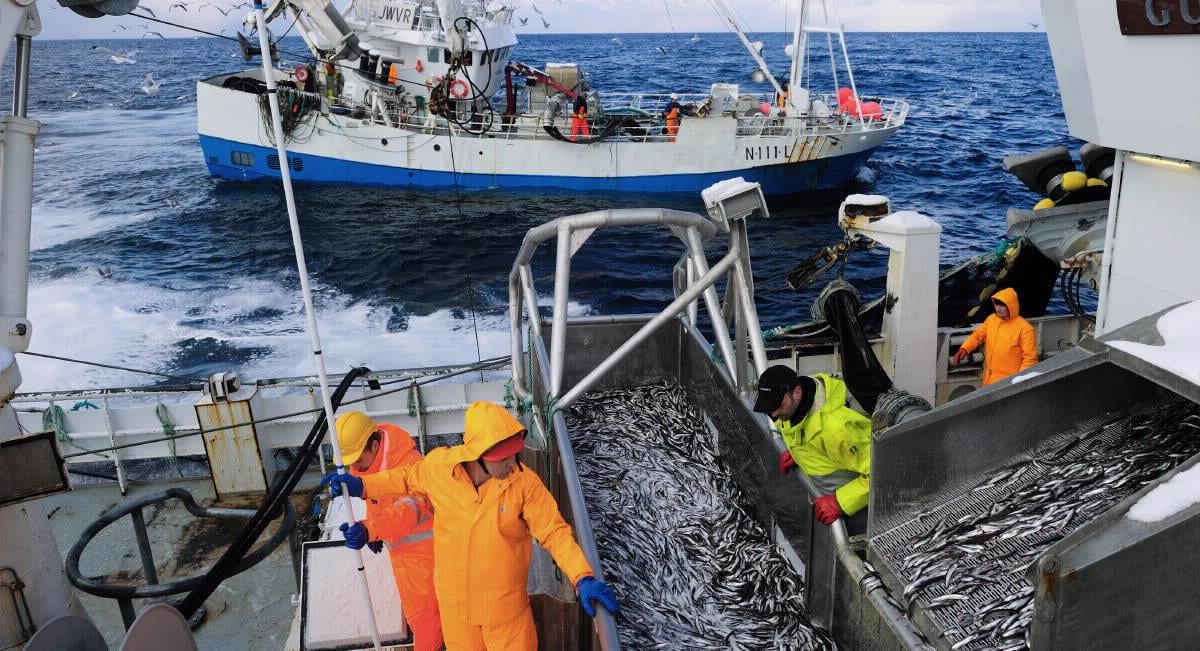
Capelin fishing. Photo: Johan Wildhagen, Norwegian Seafood Council.
The white paper on Norway’s integrated ocean management plans,8 presented by the Government in spring 2020, assembled for the first time all of the management plans for Norwegian waters in the Barents Sea and the areas off the coast of Lofoten, the Norwegian Sea, and the North Sea and Skagerrak in one white paper. The Government will present a new white paper on Norway’s integrated ocean management plans to the Storting every four years, with the next time being in 2024. In doing so, the Government is continuing and renewing the system of integrated and ecosystem-based management plans for the Norwegian Sea and ocean areas.
Norway has extensive experience in managing biological resources in the oceans. The annual fisheries agreements ensure sustainable harvesting of fish stocks that are shared with other countries. The agreements are based on independent scientific advice and contain binding conditions for quota allocation, management initiatives and control cooperation. Through the agreements, Norway is ensured a fair share when assigning quotas for joint regulated stocks.The Government is also facilitating predictable and sustainable growth in the aquaculture industry. The new management system for continued growth in Norwegian salmon and trout farming was established in 2017. In the “traffic light” system, the coast is divided into production areas and the production capacity in these areas is adjusted based on environmental indicators9 and a fiscal rule. The colour of the traffic light is based on the impact of salmon lice on the wild salmon in the area. This determines whether the fish farmers in the area are permitted to increase or need to decrease their production.
During its period in office, the Government has facilitated profitable production of oil and gas through predictable framework conditions. The current practice of conducting regular licensing rounds to provide the industry with access to new exploration areas has been continued. Petroleum activities are strictly regulated. The authorities set requirements for permits, consent and approval during all phases of petroleum activities. The industry players themselves are responsible for complying with the regulations, while the authorities monitor their activities.
Norway’s tradition of knowledge-based ocean management will be at the heart of the management of completely new ocean industries such as offshore wind and seabed minerals. The Utsira North and Southern North Sea II areas were opened for offshore wind on 1 January 2021. These areas provide opportunities for demonstration projects and larger projects involving both fixed and floating offshore wind power. The Ocean Energy Act Regulations were enacted at the same time. The work on developing the framework for a new industry is complicated, however it will establish the basis for a long-term perspective and predictability.
Seabed minerals may become an important new ocean industry for Norway in the long-term and contribute to both employment and value creation. We have a long tradition of prudent and knowledge-based management of our natural resources, and this will also apply for the management of seabed minerals. These activities will only be permitted in Norway if they can be carried out in a responsible manner.
The Government has commenced a process of opening up areas on the Norwegian continental shelf for mineral activities in accordance with the Seabed Minerals Act. This process will enable us to obtain more, up-to-date and overall knowledge about the potential impact of seabed mineral activities. This will form the basis for any decision on whether to open up areas on the Norwegian continental shelf. The Norwegian Petroleum Directorate has been tasked with assessing the potential for seabed minerals on the Norwegian continental shelf. During the past three years, they have carried out data collection expeditions to the deep-sea areas near Mohns Ridge in the Norwegian Sea.
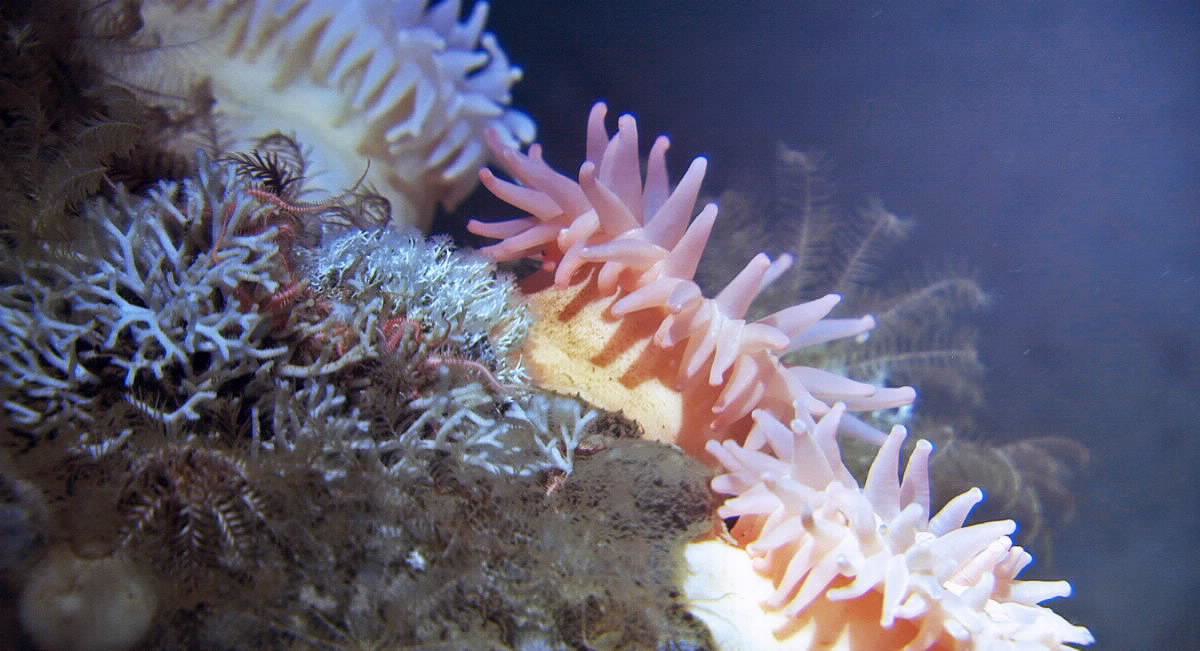
Sea anemones, moss animals and bristle worms. Photo: Mareano/Institute of Marine Research.
Clean and healthy oceans
Clean oceans with high levels of biodiversity and production provide the basis for sustainable utilisation of marine biological resources and healthy and safe seafood. Oceans play an important role in the face of global challenges relating to climate change, population growth, and the need for more food, medicines, energy, transport and minerals. At the same time, the many complex ecosystems of the oceans face significant threats, such as climate change, acidification, temperature rises, pollution and littering, overfishing and loss of biodiversity.
Climate change can also result in changes to the levels of pollutants in the food chain. The pollutants remain in the environment and in organisms long after the emissions cease, while new pollutants are added. Efforts to combat pollutants are therefore important, not only for the environment, but also for the ocean as a food source and for public health.
Plastic and microplastics
Marine plastic litter and the spread of microplastics is a growing global environmental problem that impacts on ecosystems and can be a challenge to both food safety and food security. In recent years, research efforts relating to plastic litter in water and seafood and the consequences of this have been intensified. A number of measures have been initiated to prevent marine litter in Norway. Much of the plastic litter in our northern sea areas comes from the fisheries and aquaculture industry. The Directorate of Fisheries has strengthened its work on preventing and cleaning up marine litter, and in March 2021 launched a new action plan to combat marine litter. The plan includes specific measures, including labelling of fishing equipment and registering lost fishing equipment. Efforts to prevent plastic littering are also being actively followed up through regional and global cooperation. In 2021, the Government will present a revised plastics strategy, which will comprehensively examine how to reduce plastic pollution.
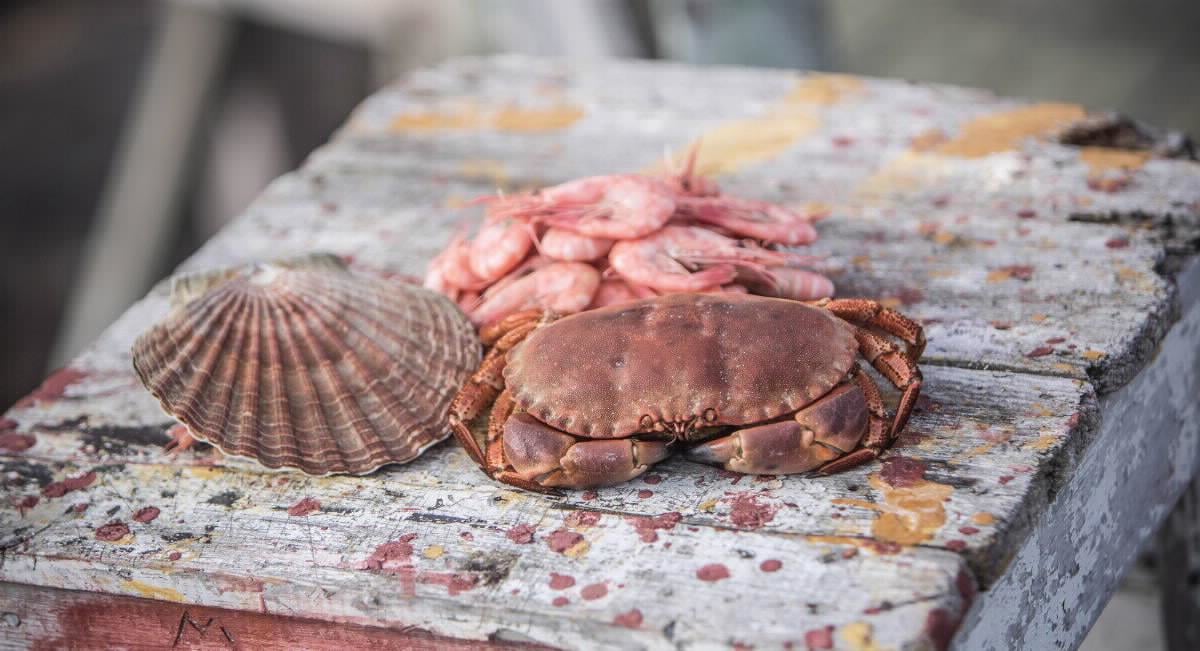
Norwegian seafood. Photo: Andreas Lindlahr, Norwegian Seafood Council.
Climate change and ocean acidification
According to the Intergovernmental Panel on Climate Change (IPCC), the oceans are entering anew state as a result of rising CO2 levels and global warming. This may have significant consequences for marine ecosystems and living resources, including in Norwegian waters, which in turn will affect ocean industries and coastal communities. The Government will emphasise climate-resilient management of living marine resources and marine biodiversity, work to maintain natural carbon sinks (blue forests), and facilitate the development of new ocean industries such as environmentally friendly cultivation of seaweed and kelp as a measure for boosting carbon uptake.
The ocean economy can make an important contribution to necessary reductions in emissions. A report commissioned by the Ocean Panel has calculated that the ocean economy can contribute to one-fifth of the reduction in emissions that will be needed over the next 30 years to limit global warming to 1.5 degrees.10
Conservation of marine nature
Norway manages sea areas with world famous fjords, a distinctive archipelago, unique cold water corals, open sea areas and deep seas with valuable nature on the seabed. Marine protected areas and other effective area-based conservation measures will contribute to preserving important underwater nature and ecological functions. There is a connection between rich biodiversity and biological production, ecosystem services that provide potential for harvesting, and the value creation we obtain from harvesting renewable resources. In the spring of 2020, the Government approved the establishment of nine new marine protected areas along the coast. In the spring of 2021, the Government presented a white paper on the conservation of marine nature to the Storting.11
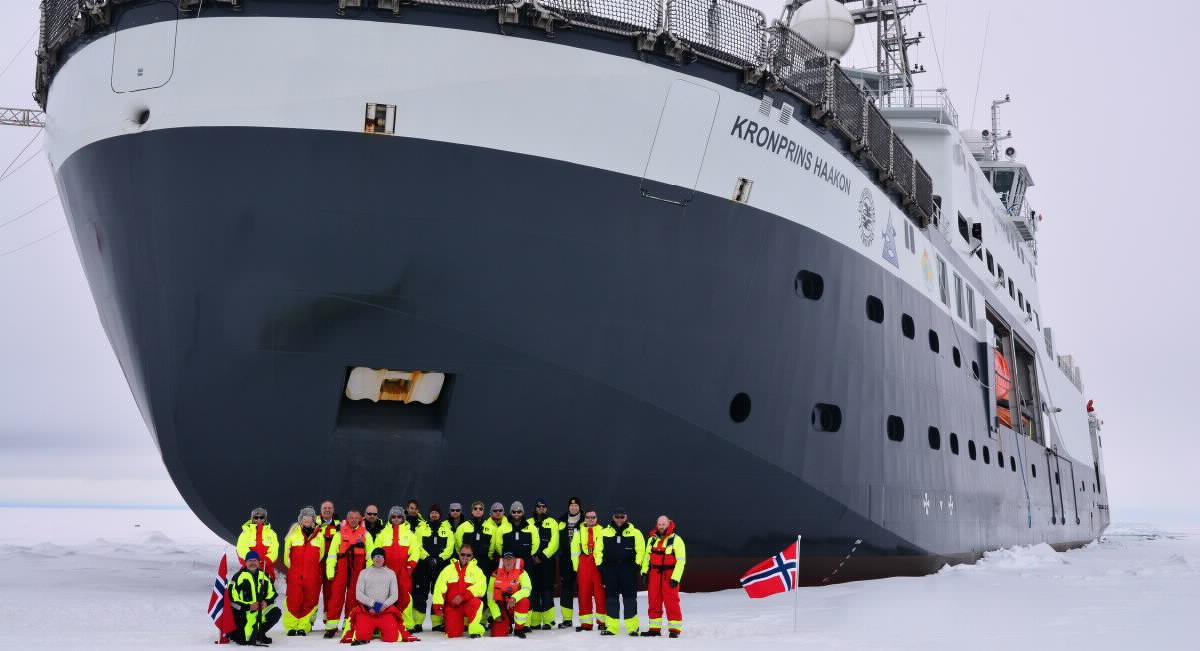
“Kronprins Haakon” during ice testing in 2018. Photo: Øystein Mikelborg/Norwegian Polar Institute.
Combating pollution
In recent years, much has been done through national and regional regulations, and global conventions to reduce and eliminate emissions of the most environmentally hazardous substances from land-based industry. Results from Norwegian environmental monitoring which show the spread of pollutants and impact on the environment and health are important for winning support for international regulations. In some areas, such as the Northeast Atlantic, measures have resulted in a sharp decline in emissions from land-based industry and a reduction in the concentrations of certain pollutants. There is little pollution in Norway’s open sea areas, however there are problems in some coastal areas, especially in sediments in ports and outside industrial sites, that are the result of previous emissions. The environmental status in the Artic is also generally good, but there are higher levels of certain pollutants in some areas. This is due to pollution from long-range transport. Norway is making significant efforts to continuously develop regulations both within the European Economic Area and globally, to reduce the use and discharge of chemicals that are hazardous to health and the environment.
Pollution from past activities is deposited in the seabed in many ports and fjord areas along the coast of Norway. This type of pollution is primarily a threat to plants and animals in the oceans, both through its acute impact and also through more long-term effects such as disturbances in reproduction and genetic material. The national action plan for cleaning up polluted seabeds12 prioritised 17 coastal and port areas because the pollution situation in these areas was considered particularly serious. Six of these areas: Oslo, Sandefjord, Trondheim, Harstad, Tromsø and Arendal, have now been remediated. Some other fjord areas, such as Puddefjorden, Listerfjorden and Kristiansandsfjorden, have been partially remediated. In cooperation with Hammerfest Municipality and Hammerfest Havn KF, the Norwegian Coastal Administration will commence the process of remediating the contaminated seabed in Hammerfest harbour during 2021. This work is expected to be completed in 2023.
Commitment to research and innovation
Research, knowledge and technological development are crucial to unlocking the potential for further value creation in the ocean industries, and for ensuring sustainable growth. The development of sustainable and emission-free solutions is vital for addressing the world’s environmental challenges and strengthening the competitiveness of the Norwegian ocean industries in a global market. Digital solutions and new technology represent an important part of the restructuring and development of the ocean industries.
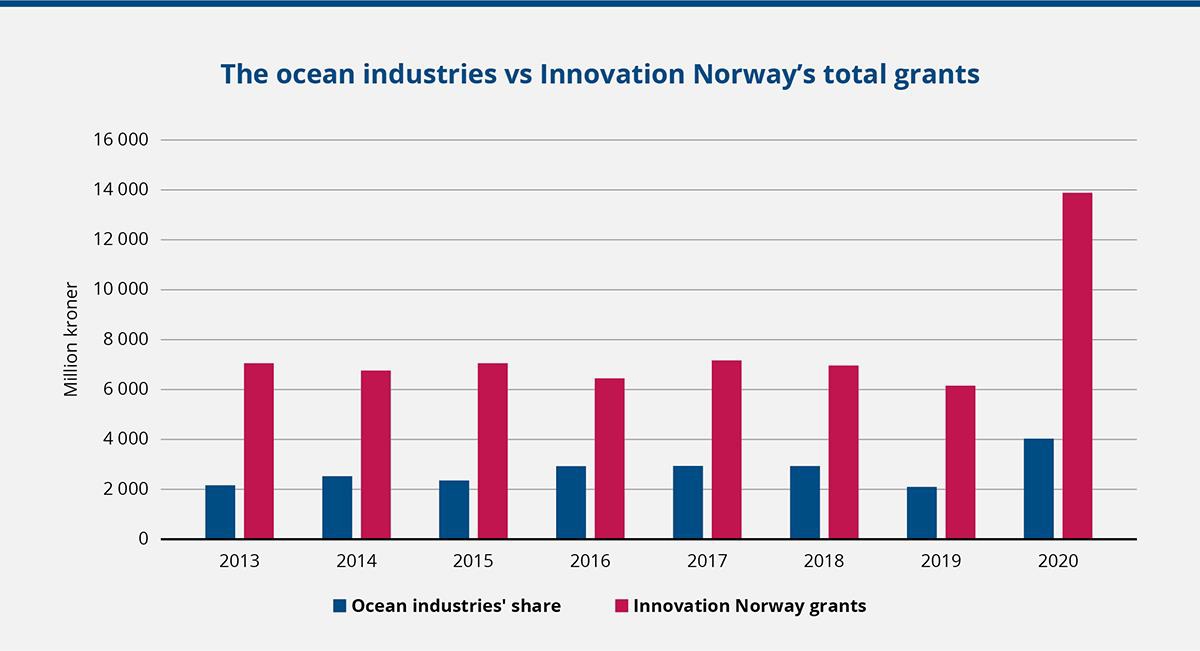
The ocean industries as a proportion of Innovation Norway’s total grants. Source: Innovation Norway
The Government has committed to maintaining and strengthening Norwegian ocean research and innovation. Therefore, a significant proportion of the grants from the Research Council of Norway and Innovation Norway go towards various ocean industries. This tells something about the unique position of the ocean industries in the development of the Norwegian economy. In addition to major initiatives in aquaculture, marine research, energy (including offshore wind), bioeconomy and petroleum, since 2014 the Research Council of Norway has had a coordinated focus on ocean technology to strengthen the ocean industries. The ocean industries take cooperation seriously, and they are represented in the majority of and the most important Norwegian industry clusters, including in the three GCE-clusters.13
The Government has strengthened marine research efforts and contributes to increased knowledge for the commercial development and management of ocean and coastal ecology. This includes preliminary planning of the process of co-locating the Institute of Marine Research and the Norwegian Directorate of Fisheries.
Scientific advice, sound management principles and good control over the harvesting of resources are crucial for realising a high long-term return from marine stocks. The Directorate of Fisheries is an advisory and executive body within fisheries management, and cooperates with the Institute of Marine Research to provide the Government with the best available knowledge-based advice.
Green shipping, digitalisation and autonomy are particularly important areas for maritime research. Within oil and gas, more and more companies are investing in digital and environmentally friendly solutions, and are developing technology and expertise that can be used in other industries. The focus within energy and the environment is on offshore wind and hydrogen infrastructure, as well as fuel cells for maritime solutions. The supply industry from the oil and gas industries plays an important role in this transition.It is important to have extensive and continuous monitoring of seafood in order to document the state of the ocean. Research and monitoring are continually adapting to new issues such as microplastics, new types of pollutants and new marine species that are being used as food. It is a priority to increase knowledge about healthy and safe seafood by considering the entire food chain - from clean and healthy oceans, safe and sustainable feed, and healthy and safe seafood, to the importance of seafood for health.
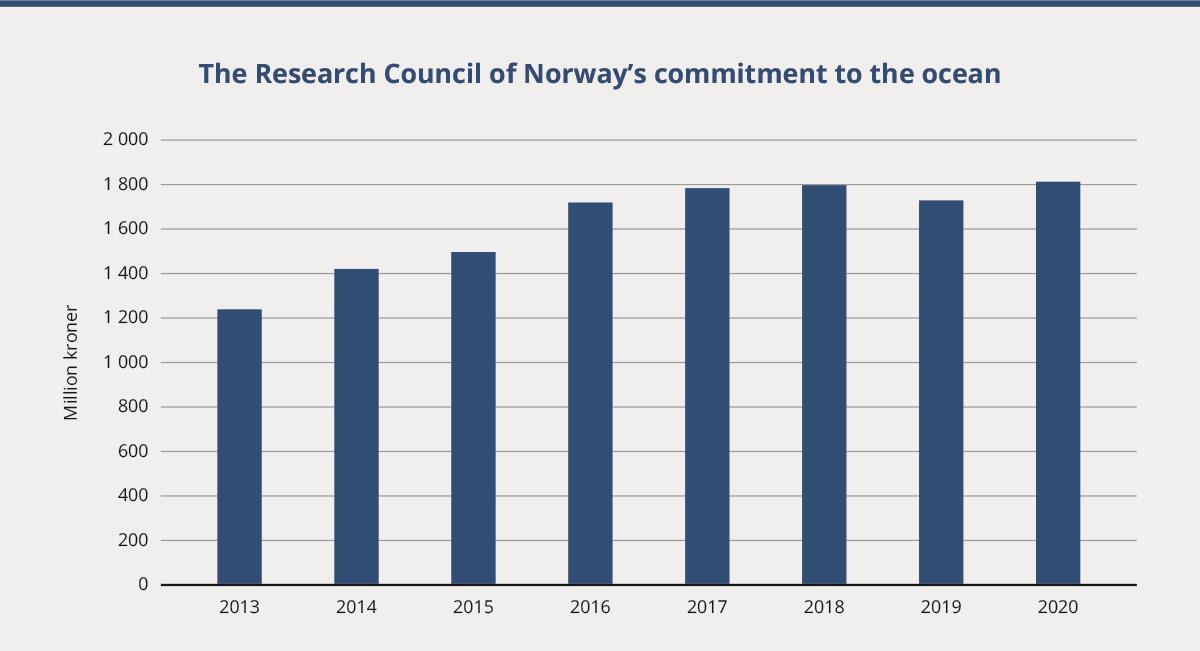
Grants from the Research Council of Norway for ocean-related projects. Source: Research Council of Norway.
The ocean industries receive a large proportion of the total grants allocated by Innovation Norway. From 2013 to 2020, the combined share amounted to 36.3 per cent (NOK 22.3 billion) of the total (NOK 61.4 billion) and has varied from 29.3 per cent to 45.8 per cent as a share of total grants during this period. This is based on a total of 7,436 grants for customer projects in the ocean industries.
The seabed in Norwegian waters is mapped by the Mareano Programme, which provides knowledge about depth and seabed topography, geology, sediment, habitats and pollution. By the end of 2020, depth data was available for approximately 28 per cent of Norway’s coastal and ocean areas. The knowledge generated by the Mareano Programme is important as a basis for integrated, ecosystem-based ocean management.
The Centre for the Ocean and the Arctic
The Centre for the Ocean and the Arctic was established in 2018. The Centre’s objective is to compile, analyse and disseminate knowledge regarding the effects of global and regional change processes on the blue economy and the basis for being able to harvest and create value from the resources in the High North and the Arctic, and communicate the results to both a national and an international audience. The Centre also facilitates dialogue on ocean and High North policy between industry, research, management and civil society.14
Better data and marine basemaps are of major importance for coastal waters and port infrastructure. The Marine Basemaps Pilot Programme from 2020 to 2022 demonstrates new methods of collaborating on the collection and dissemination of data relating to seabed conditions along the coast. The Norwegian Mapping Authority, the Geological Survey of Norway and the Institute of Marine Research have an ambition to map the entire Norwegian coastal zone, an area totalling 100,000 square kilometres.
Norway is a full participant in the EU’s research partnership Horizon Europe, which has several blue initiatives in the works from 2021 to 2027. The Government is working to influence the EU’s blue programmes in order to ensure that these respond to key knowledge requirements in Norwegian ocean industries.
The governmental institutions’ research vessels, research stations and laboratories constitute a significant part of the marine research infrastructure that is under state ownership. The new ice-going research vessel “Kronprins Haakon” completed a voyage to Antarctica from December 2018 to May 2019, and has since completed several expeditions in the Arctic. The Government has started the process of procuring a new coastal research vessel, underwater robotics and sail drones.
United Nations Decade of Ocean Science
The United Nations Decade of Ocean Science for Sustainable Development from 2021 to 2030 will be a global initiative for raising awareness about the oceans. The decade will stimulate and coordinate national and global research efforts to achieve the sustainable development goals. Norway is one of the largest contributors to the Decade of Ocean Science through support for the UN Intergovernmental Oceanographic Commission (IOC). Norway is a member of the Ocean Decade Alliance, and Prime Minister Erna Solberg is a strong advocate of the alliance.
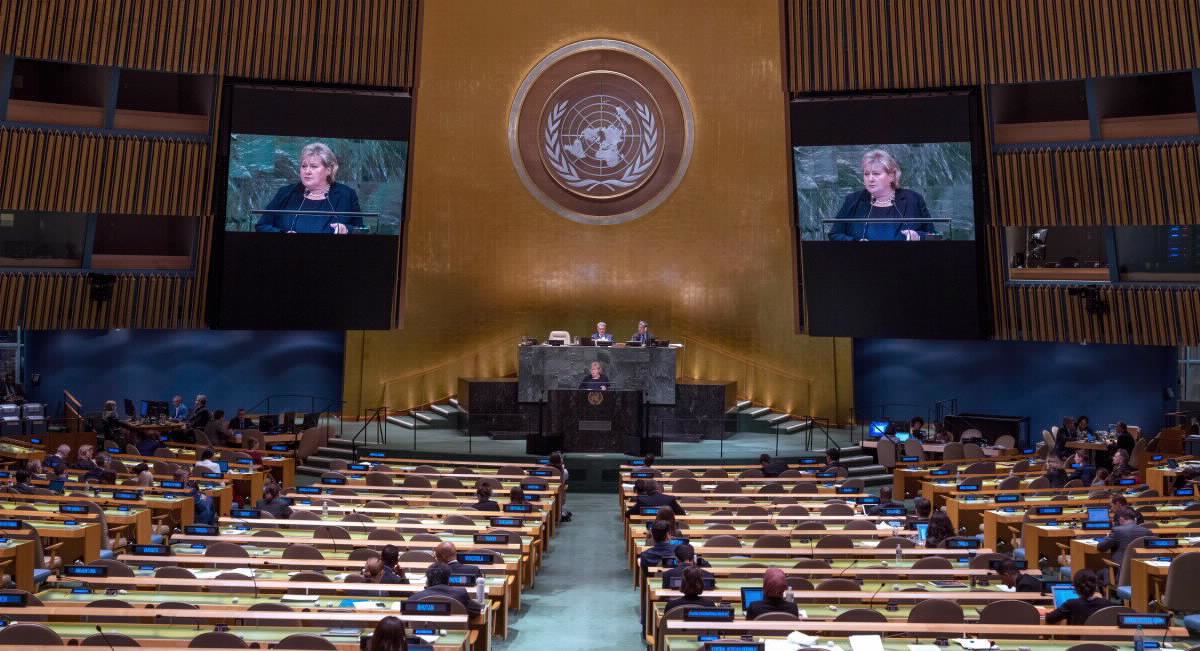
Prime Minister Erna Solberg addressing the UN General Assembly at the UN Headquarters in New York, September 2018. Photo: UN Photo/Cia Pak.
A leading international role in ocean-related matters
Norway is an attractive partner for international ocean cooperation. The international opportunities for Norwegian ocean industries are of major importance to economic development in Norway, and Norway will continue to take a leadership role internationally to ensure sustainable use. This includes both extensive efforts to promote a sustainable blue economy in developing countries and contributing towards achieving the UN sustainable development goals.
Support for the UN Convention on the Law of the Sea, international environmental agreements, further development of international cooperation and contributions towards knowledge-based management are necessary for ensuring, clean, healthy oceans for future generations.
Follow-up of the Ocean Panel
Follow-up of the Ocean Panel’s action agenda will be given high priority going forward. This work shows that it is a matter of urgency to develop a holistic approach to ocean management across the globe in order to achieve the United Nations 2030 Agenda for Sustainable Development. A sustainable ocean economy will also play an important role in rebuilding the global economy after the COVID-19 pandemic. The Panel’s work shows that investments in the ocean economy pay off, and can make significantly greater contributions to energy, food supply, health and climate than they do at present.
Looking forward, Norway and the Ocean Panel will work to obtain the broadest possible support for the action agenda and ensure that countries are able to deliver on these actions by 2030 or sooner.
International ocean conferences
The first UN ocean conference was held in 2017. The second was scheduled to take place in Portugal in 2020. However, it has been postponed until 2022 due to the COVID-19 pandemic. Norway is working to ensure that the conference will emphasise the importance of sustainable ocean management and a sustainable ocean economy to achieve the United Nations 2030 Agenda for Sustainable Development.
The Our Ocean Conference, which was held for the first time in the United States in 2014, brings together top leaders from governments, business, civil society and research institutions, who together seek to find solutions for healthy, clean and productive oceans, and to ensure sound ocean management. In 2019, the conference was held in Oslo, with over 500 leaders from 100 countries in attendance.
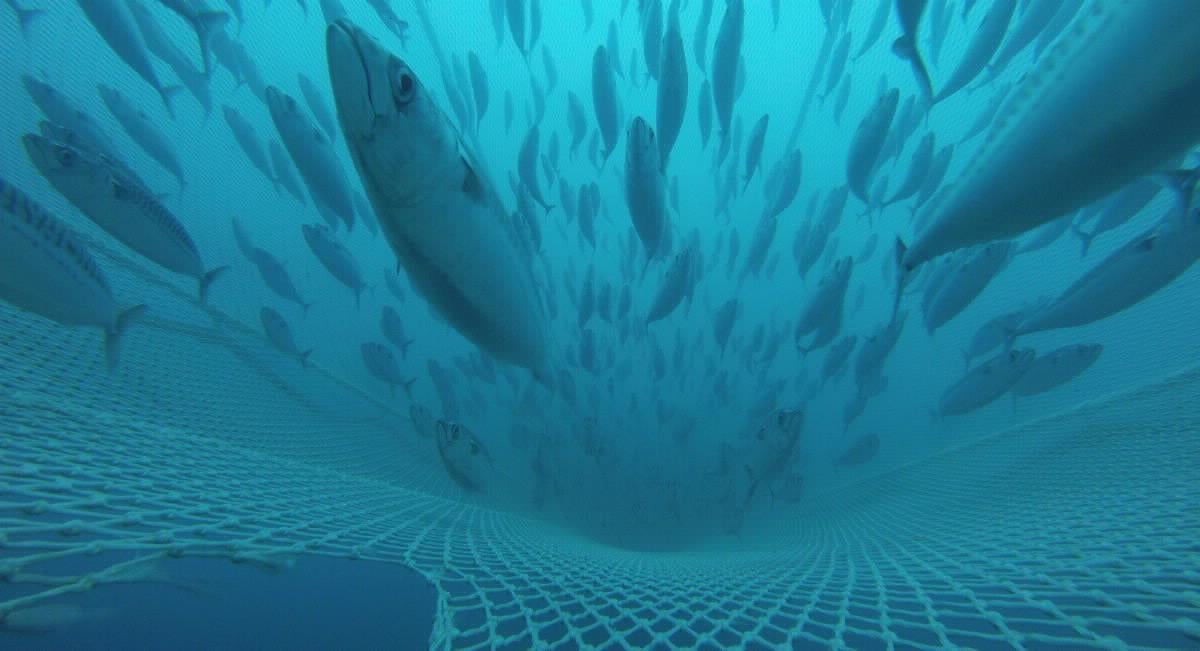
Shoal of mackerel. Photo: Leif Nøttestad, Norwegian Institute of Marine Research.
The ocean in development cooperation
Norwegian experience and expertise in the management of marine resources, the environment, ocean industries and in sustainable ocean management are in demand from a number of countries, especially developing countries. Norway has shared this knowledge and experience with other countries through various development cooperation projects and programmes over several decades. Norwegian development cooperation relating to the ocean amounted to NOK 743 million in 2019.
In addition to being an independent programme, the new knowledge programme “Oceans for development” managed by Norad15 will contribute to seeing ocean-related development cooperation in context. The primary objective is to contribute to a strengthened, sustainable and inclusive ocean economy in the cooperating countries. This will be achieved both through sharing of experiences and expertise between public institutions in the cooperating countries and Norway, and through cooperation agreements with multilateral organisations such as the Division for Ocean Affairs and the Law of the Sea (DOALOS)16 and the UN Intergovernmental Oceanographic Commission.17 Among other things, Oceans for Development is important to the follow-up of the Ocean Panel’s commitment to 100 per cent sustainable ocean management.
The “Fish for Development” programme was established in 2016 to achieve a more strategic and holistic approach to Norwegian fisheries development cooperation. The objective is that the fisheries and aquaculture sector will contribute to positive socio-economic development in the cooperating countries. This involves increased employment for women and men, as well as better food and nutritional security for the population. The programme makes Norwegian expertise and experience in fisheries and aquaculture available to developing countries.
Food from the ocean
For many years, Norway has actively worked both at a national and international level to promote the importance of a clean and healthy ocean, sustainable fisheries and aquaculture and safe and healthy food for food security and nutrition. At Norway’s initiative, the UN Committee on World Food Security (CFS)18 first discussed food from the oceans as an agenda item in 2014. Based on an expert report, the CFS recognised the importance of seafood for food security, both as a source of income and as a source of food with important nutrients.
At the UN Ocean Conference in 2017, Norway committed to establishing a global action network for sustainable food from the oceans and inland waters as part of the UN Decade of Action on Nutrition (2016–2025). The network promotes food from the oceans and inland waters as an important key for food security and nutrition, with a focus on solutions along the value chain, from healthy oceans and waters to healthy populations. The network views the UN Decade of Action on Nutrition, Decade of Ocean Science and Decade of Action to Deliver the Sustainable Development Goals as a whole.
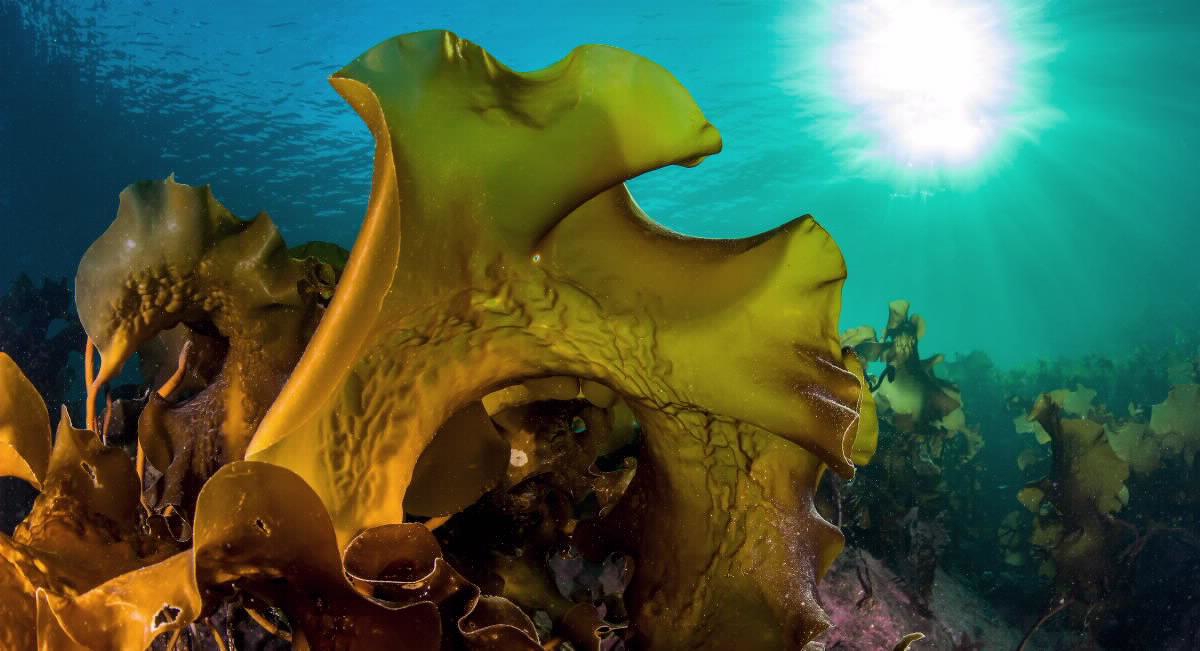
Sugar kelp. Photo: Erling Svendsen, Norwegian Institute of Marine Research.
Food from the ocean is also an important element in the work of the Ocean Panel, both through the Blue Paper “The Future of Food from the Sea” and in specific actions outlined in the Panel’s main report. Norway has emphasised this in the run-up to the upcoming UN Food Systems Summit in September 2021 and in development cooperation. In the preparations for the meeting, Norway will be co-hosting a global dialogue on food from the oceans. The global action network will promote food from the oceans in the lead up to the UN summit.
Food from the ocean is also an important element in the Norwegian action plan on sustainable food systems in the context of Norwegian foreign and development policy from 2019.19 The UN Food and Agriculture Organization (FAO)20 has developed a guide for reducing food waste in the value chain for fish.21
Fisheries crime
For a number of years, Norway has been the driving force behind international efforts to combat fisheries crime. International interest in the issue has increased, particularly from 2018, when Norway’s Minster for Fisheries took the initiative to adopt an international ministerial declaration during a conference on fisheries crime in Copenhagen (Copenhagen Declaration). In connection with the adoption of this declaration, it was decided that Norway would be the secretariat for the declaration. As of April 2021, 34 states had pledged their formal support to the declaration.
International efforts to combat fisheries crime were further strengthened following the Our Ocean conference in 2019, where the Blue Justice Initiative was launched. The goal of the initiative is to reduce the extent of organised crime and illegal trade in the fisheries sector by strengthening interdisciplinary cooperation with the police, courts, prosecutors, and control agencies in the cooperating countries. The initiative now consists of a number of Norwegian-funded projects that work to assist developing countries in addressing the issues raised in the Copenhagen Declaration.
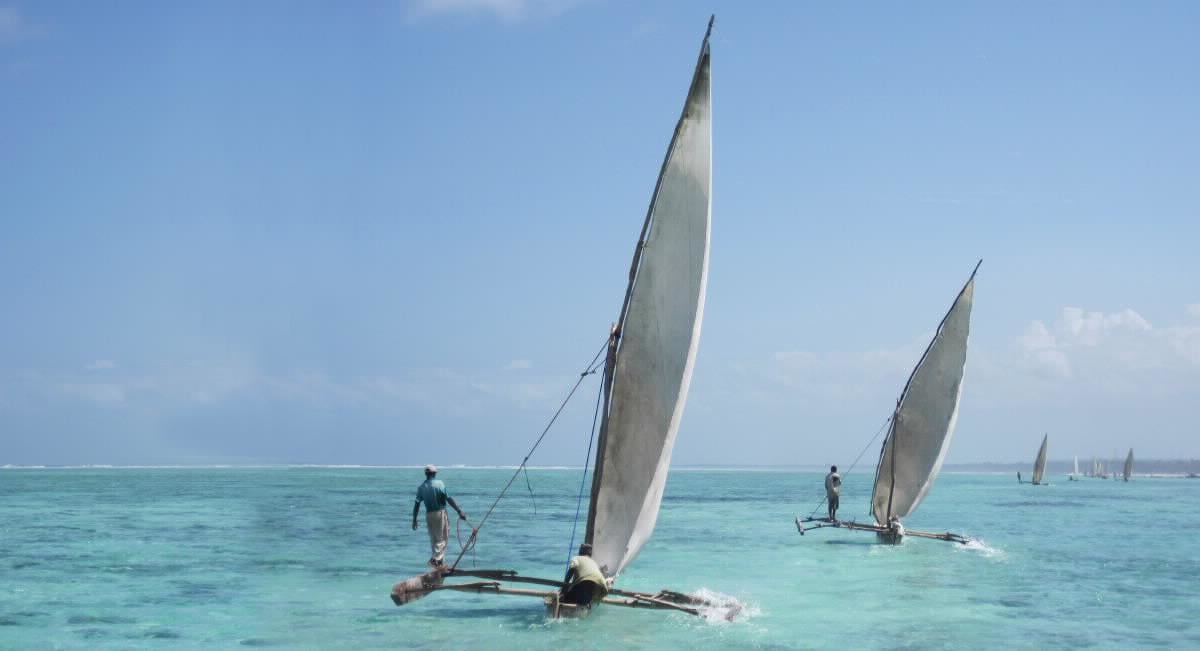
Ngalawa fishing boats in Tanzania. Photo: Ian Bryceson.
Marine litter
Marine litter and the spread of microplastics represent a global challenge for which Norway has taken an international leadership role. At Norway’s initiative, the third session of the UN Environment Assembly in 2017 agreed to a “zero vision” to stop all emissions of plastic waste into the oceans in the long-term. An expert group was also established, which was tasked with investigating the global measures that would be most effective in reducing plastic pollution in the oceans. The expert group completed their work in the autumn of 2020. Many countries are in favour of a new global agreement, and Norway wants the UN Environment Assembly to adopt a mandate for a negotiating committee at its fifth session in February 2022.
The Norwegian government has established a development cooperation programme to assist developing countries in preventing and reducing marine litter. This is an important contribution to the UN Environment Assembly’s “zero vision” to eliminate emissions of plastics and microplastics into the oceans. The programme was established in 2018, and NOK 1.6 billion will be spent on the programme from 2019 to 2024.
In 2018, Norway was a key player in the establishment of the Problue multi-donor fund, which is the World Bank’s blue economy programme. Combatting marine litter was important for Norway when the fund was established, but Norway now contributes to the entire scope of the fund, which includes efforts relating to sustainable fisheries, ocean industries and ocean and coastal zone management. The fund contributes to the implementation of the Ocean Panel’s commitment to 100 per cent sustainable ocean management in developing countries.
Strengthened ocean dialogue with key countries and organisations
An important initiative in the White Paper on the place of the oceans in Norway’s foreign and development policy22 was to strengthen dialogue and cooperation on ocean-related issues with relevant countries and organisations. Strategic ocean dialogues have since been initiated with Australia, India and Chile, and efforts are being made to do the same with Indonesia and China. The ocean cooperation with the USA, France, Kenya, Brazil, ASEAN, AU and the EU, among others, is being strengthened.
Within government cooperation among Nordic countries, Norway is a driving force for several initiatives concerning the oceans, including green shipping, the blue economy and ocean research. The Nordic countries are also a driving force for an international agreement on marine litter.
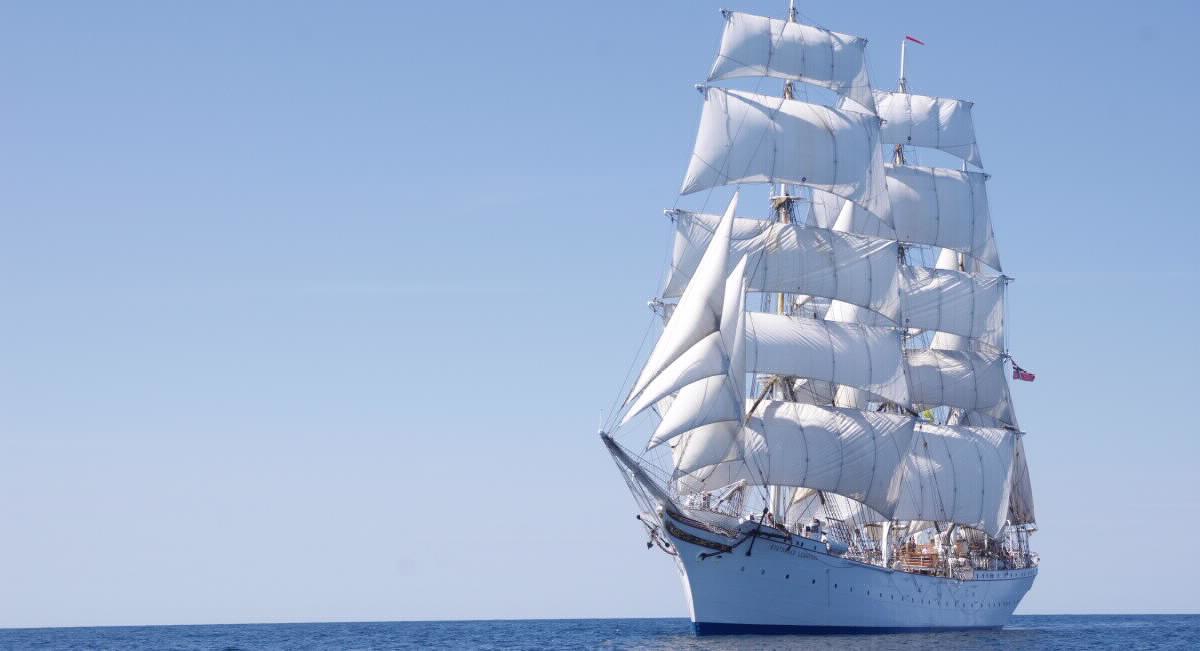
Statsraad Lehmkuhl will embark on the One Ocean expedition. Photo: Jesper Rosenmai.
The One Oceanexpedition- Statsraad Lehmkuhl a sailing ambassador.
Over the course of 19 months, from August 2021 until April 2023, the ship Statsraad Lehmkuhl will visit 37 ports around the world and sail over 55,000 nautical miles.The purpose of the expedition is to raise awareness and share knowledge about the role of the oceans in sustainable development from a global perspective. This will be achieved by promoting learning about the oceans and developing sustainable leaders in collaboration with several universities and university colleges. Data collection and research will be carried out in collaboration with, among others, the Institute of Marine Research, the Norwegian Research Centre (NORCE) and the Norwegian Meteorological Institute. Last but not least, scientific information will be exchanged at the ports and on social media during the expedition.
The expedition will be an official part of the UN Decade of Ocean Science. One of the objectives is to disseminate, discuss and bring the Ocean Panel’s report out into the world. “One Ocean” is a national project in which the Ministry of Foreign Affairs, Ministry of Trade, Industry and Fisheries, the Ministry of Education and Research and institutions within academia, research, education and the business sector are partners.
Norway is continuing its long-standing efforts in various international cooperation mechanisms that contribute to global ocean management. This applies to the UN General Assembly and other global, standard-setting forums for the environment, shipping, mineral activities and fisheries. We actively contribute in the negotiations of the UN’s annual resolutions on the oceans. Continuous efforts are being made to strengthen and further develop the Law of the Sea as a tool for protecting the oceans through conservation and sustainable use of marine resources. Norway contributes actively to the negotiations in the International Seabed Authority (ISA) of an international regulatory framework that will ensure fair and safe utilisation of mineral resources beyond national jurisdictions in line with strict and knowledge-based environmental standards.23
Norway is also actively contributing to the negotiations of a new agreement under the Law of the Sea Convention on Conservation and Sustainable Use of Marine Biodiversity of Areas Beyond National Jurisdiction (BBNJ24), which includes rules for area-based conservation measures and impact assessments. Crucial efforts are also being done in regional cooperation forums for the environment and resource management, for example, in the Arctic, North Atlantic and Antarctic.
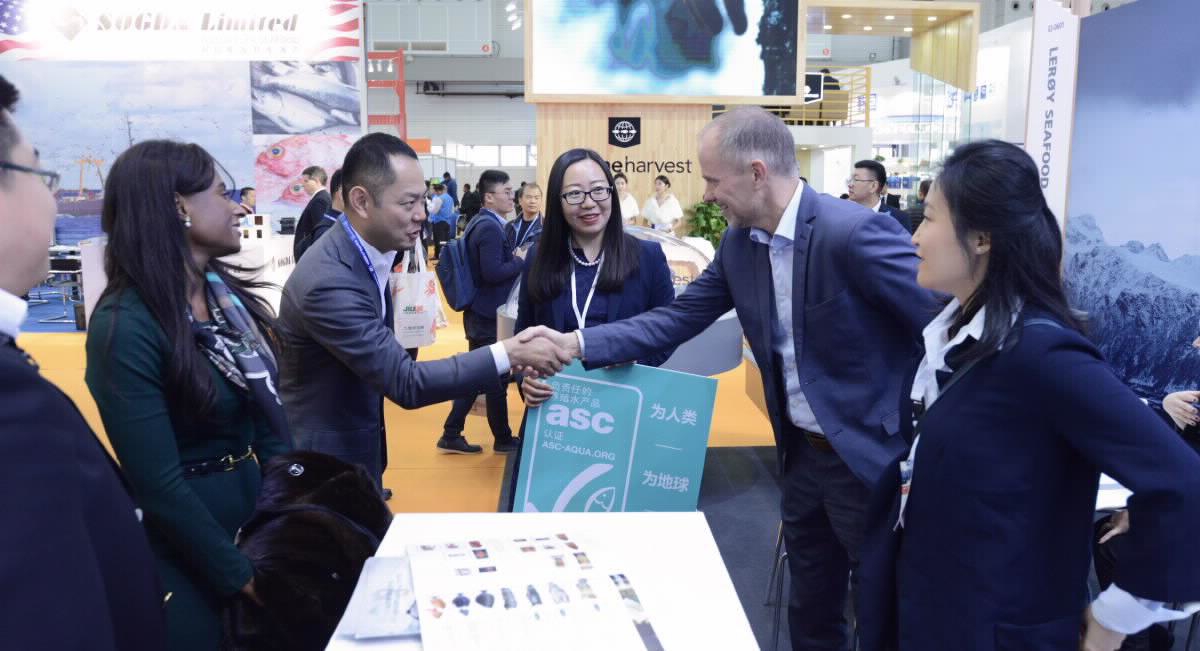
China Fisheries 2018. Photo: Innovation Norway.
Involvement of international business and industry
International business and industry play an important role in developing a sustainable global ocean economy. In 2018, the UN Global Compact established the Action Platform for Sustainable Ocean Business, in which the business sector, academia, governments and the UN system examine how the ocean industries can contribute to achieving the UN sustainable development goals. The Government has supported this work since the project’s establishment, which involves leading players in the most important ocean industries working together to assess regulations, and reaching agreements on principles for sustainable industrial development in the oceans.
The COVID-19 pandemic continues to take its toll on Norway and the rest of the world. Life and health have been heavily impacted by the pandemic and infection control measures have curtailed social and economic activity. This has had major consequences for people and businesses and the Norwegian and international economy.
In many places, ocean industries such as shipping, fishing and tourism have come to an almost complete halt. The business sector’s commitment to the ocean industries is an important contribution to not only access to healthy and safe food, but also to meet the longer-term needs for well-paid jobs and sustainable industries.
Sustainable ocean industries provide export opportunities
In order to deliver sustainable energy, food and transportation solutions, the Norwegian ocean industries are dependent on access to international markets. A well-functioning international trading system and good trade agreements are therefore a high priority for the Government. In October 2020, the Government presented an action plan to promote exports, with the ocean industries being one of the areas highlighted. As a follow-up to the action plan, the Government announced the establishment a new export promotion unit in June 2021 (Export Strategy Council). The unit will be responsible for identifying and implementing integrated strategic export initiatives in close cooperation with the business sector and the other public funding agencies. In order for efforts to promote Norwegian business and industry abroad to be as coordinated as possible, the export-oriented public funding agencies and the business sector cooperate in the Team Norway network.
An important part of Innovation Norway’s work is to contribute to promoting the ocean industries, and the digital service “The Explorer”25 demonstrates examples of Norwegian sustainable solutions. “Team Norway Havet” (Team Norway Oceans), which brings together the authorities, public funding systems and the ocean industry organisations, has established joint priorities for topics, materials, events and campaigns to contribute to the companies’ export initiatives.
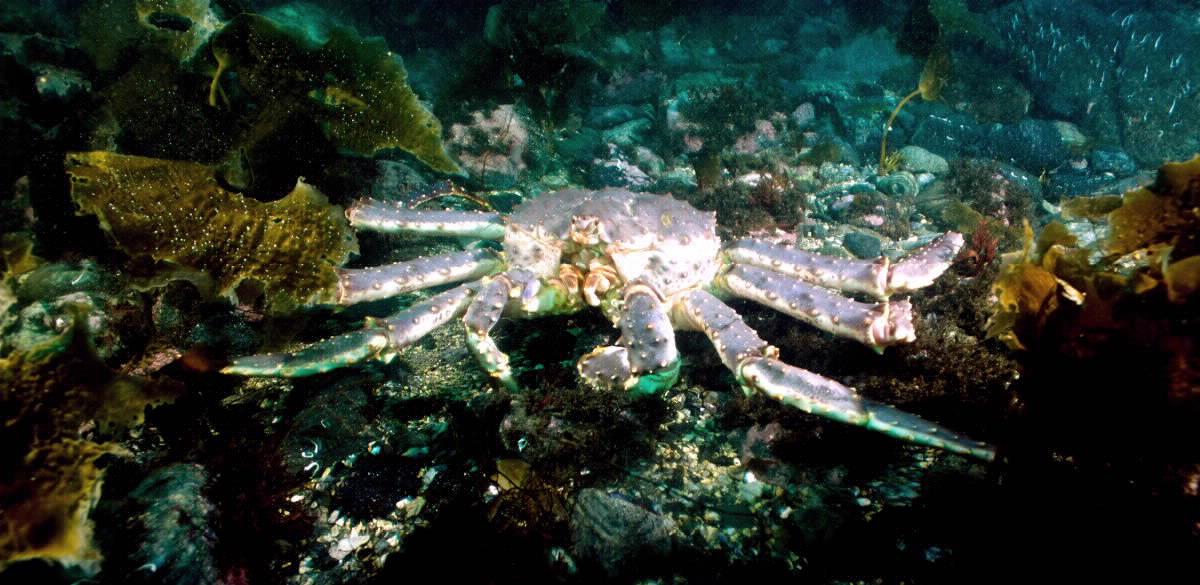
Red king crab. Photo: Per Eide Studio, Norwegian Seafood Council.